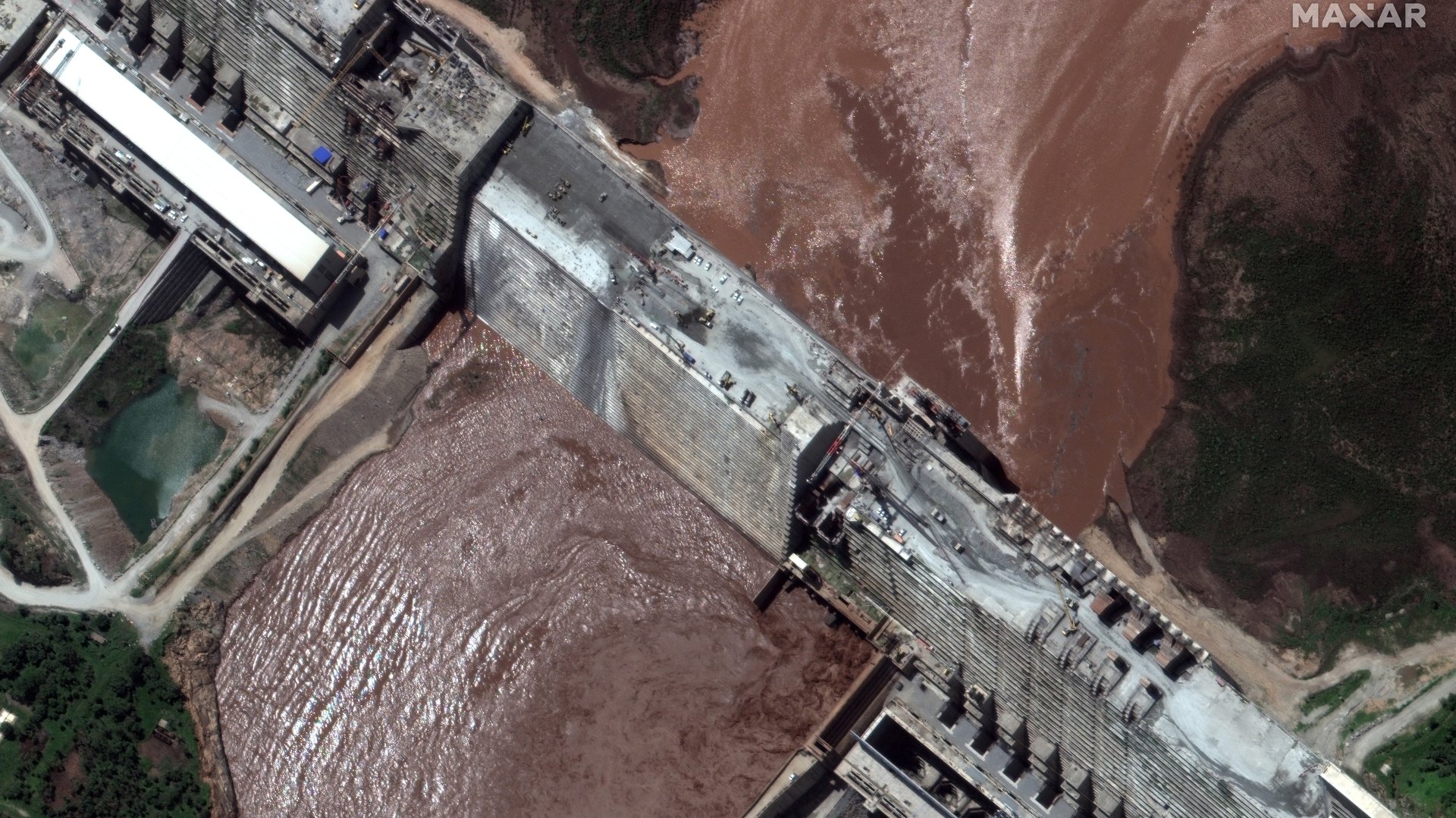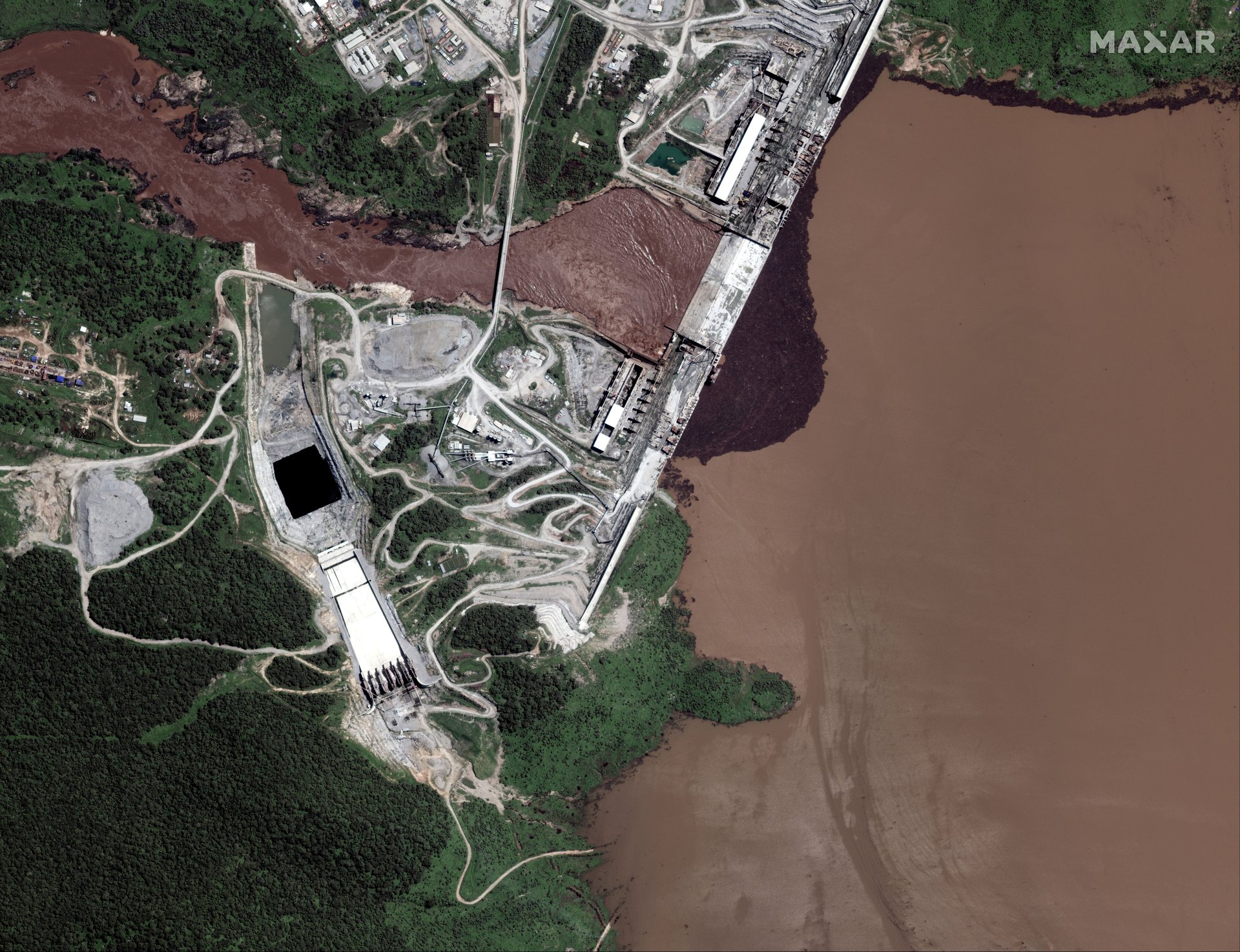What Egypt, Sudan and Ethiopia must overcome to all benefit from the Grand Renaissance Dam
On July 21, a virtual meeting summoned by president Cyril Ramaphosa of South Africa, the current chair of the African Union (AU), deliberated the fate of the negotiations between Egypt, Ethiopia and Sudan over the Grand Ethiopian Renaissance Dam (GERD). The meeting, which was attended by the leaders of the three countries, produced “a major common understanding” among the negotiating parties, and concluded by extending the AU-led technical negotiations.


On July 21, a virtual meeting summoned by president Cyril Ramaphosa of South Africa, the current chair of the African Union (AU), deliberated the fate of the negotiations between Egypt, Ethiopia and Sudan over the Grand Ethiopian Renaissance Dam (GERD). The meeting, which was attended by the leaders of the three countries, produced “a major common understanding” among the negotiating parties, and concluded by extending the AU-led technical negotiations.
A week before, the three countries had ended the first round of the A.U.-led negotiations without an agreement. Tensions further arose when satellite images revealed a growing reservoir behind the GERD, angering Egypt and Sudan that had demanded that Ethiopia should not start filling the dam without an agreement.
Ethiopian officials have explained that the dam’s gates are not closed, and that the water pool is caused by an inflow of flood after heavy monsoon rains. Ethiopia had in the past asserted that the filling of the dam should not be subject to the conclusion of an agreement—a condition that it feared would weaken its position in the negotiations.

The current negotiations under the auspices of the AU thus seem to be making progress in breaking a deadlock that lasted almost a decade. The AU came to its current facilitation role after the US-led negotiations faltered in mid-February 2020, when Ethiopia withdrew from the process under the pretext that it needed more time to discuss the draft document. The US mediation effort has helped narrow the difference between Egypt and Ethiopia on the pace of filling of the dam’s reservoir. There is now consensus on a stage-based filling of the dam, and an understanding on the specific amount of filling during the first two years that will enable the testing of the dam’s turbines.
Unfortunately, the US-drafted agreement contained provisions Ethiopia considers to be highly unfair but Egypt demands vehemently. By giving Egypt hopes of securing an agreement that apparently was not acceptable to Ethiopia, the process seems to have reinforced differences and slowed down the pace of the negotiations.
One of these is a provision that required Ethiopia to compensate for the decline in the river’s flow during years of drought by drawing down the GERD’s reservoir. This was expected to ensure a minimum guaranteed downstream flow by compensating for changes that significantly reduce in the Nile’s flow below its historical average, including natural droughts as well as greater water usage upstream. Ethiopia complains that these conditions not only compromise the GERD’s ability to operate at full capacity, but also infringed upon its rights for utilizing the Nile waters in the future.
Second, a binding agreement that includes external arbitration will effectively introduce a permanent water allocation scheme. Ethiopia has objected that this would amount to using the GERD as an excuse to impose an unfair water allocation scheme that would cement Egypt’s claim of “current use” and “historical rights” over the Nile waters.
The African Union-led process has the potential to help narrow these differences. First, as a founding member and the seat of the AU, Ethiopia will have greater incentives to make concessions as it would not desire to undermine the legitimacy of the institution. Second, the AU can help institutionalize a future agreement by facilitating the creation of an implementing organ. Such a body will be needed to coordinate technical and legal processes related to information sharing, operational coordination, and dispute resolution.
The Nile Basin Initiative (NBI), which was formed by 10 riparian countries in 1999, was originally intended for implementing these types of transboundary agreements on the Nile. In principle, it can be used to coordinate technical aspects of a Nile agreement between Ethiopia, Egypt and Sudan. If the past is any indication, however, Egypt is unlikely to agree on dovetailing a Blue Nile agreement with Ethiopia and Sudan under the NBI for fear that it will legitimize further upstream development.
In the long-term, the three countries will have to find a water sharing formula that is fair and acceptable to all of them. This will become more likely if they first agree on the filling of the GERD, and subsequently work their way to narrow remaining differences. Ethiopia’s primary interest in the GERD, and any future development project, is for hydroelectric power generation that does not lead to a permanent reduction in the river’s flow. So long as Ethiopia closely coordinates the operation of its dams with downstream countries, there will be limited concern of a rapid, significant decline in the river’s flow.
Bonded by a shared river and a long history, and increasingly interdependent on each other, Ethiopia, Egypt, Sudan do not have any choice other than negotiating in good faith to overcome the challenges on their paths. With a clear understanding of their shared destiny, it should not be impossible to reach an agreement that will satisfy Ethiopia’s development aspirations without undermining Egypt’s and Sudan’s water security. The leaders of the three countries should pursue a bold and inclusive vision to craft a cooperative agreement that serves all countries that share the Nile.
Sign up to the Quartz Africa Weekly Brief here for news and analysis on African business, tech and innovation in your inbox